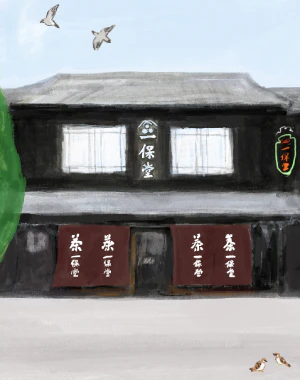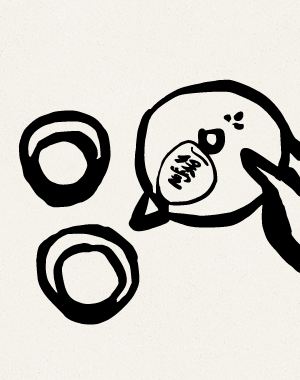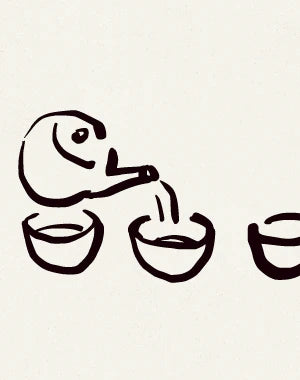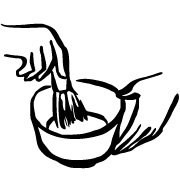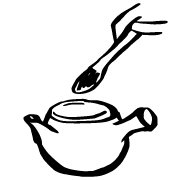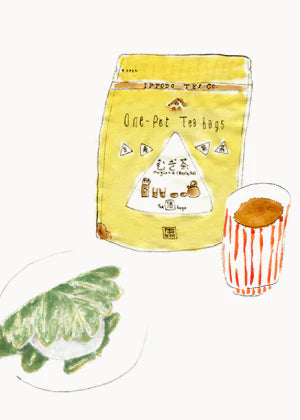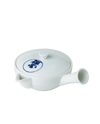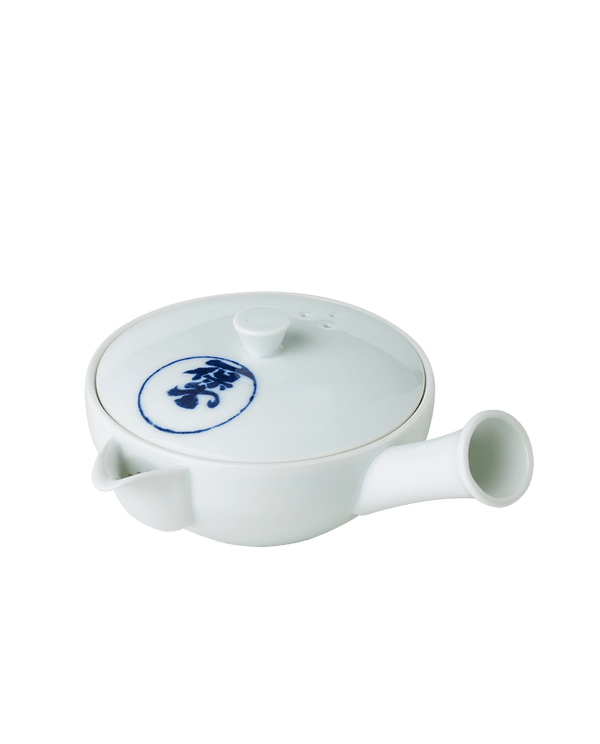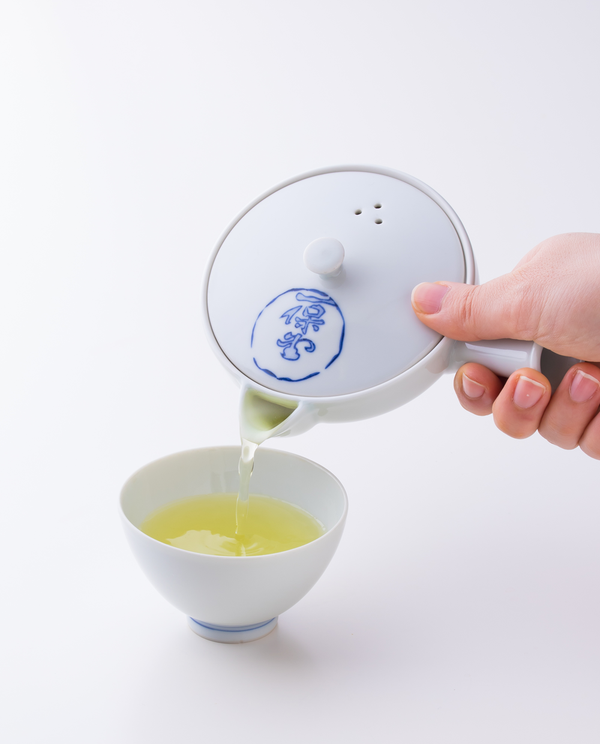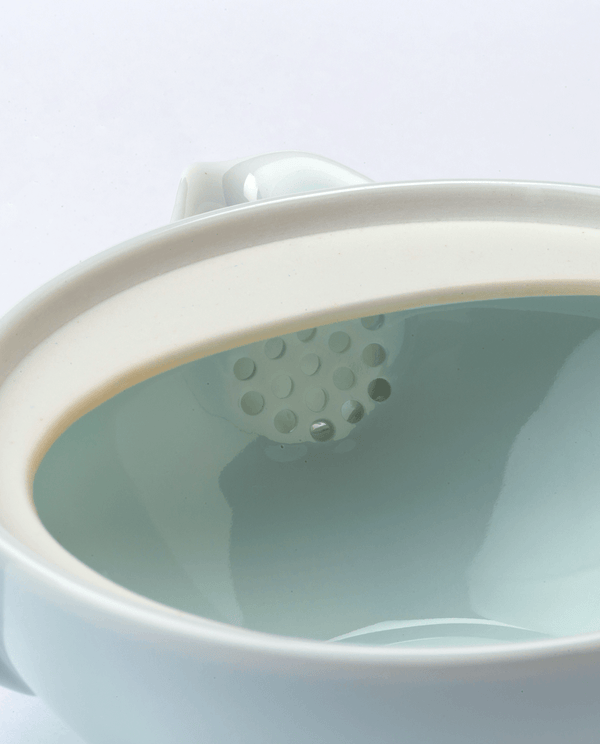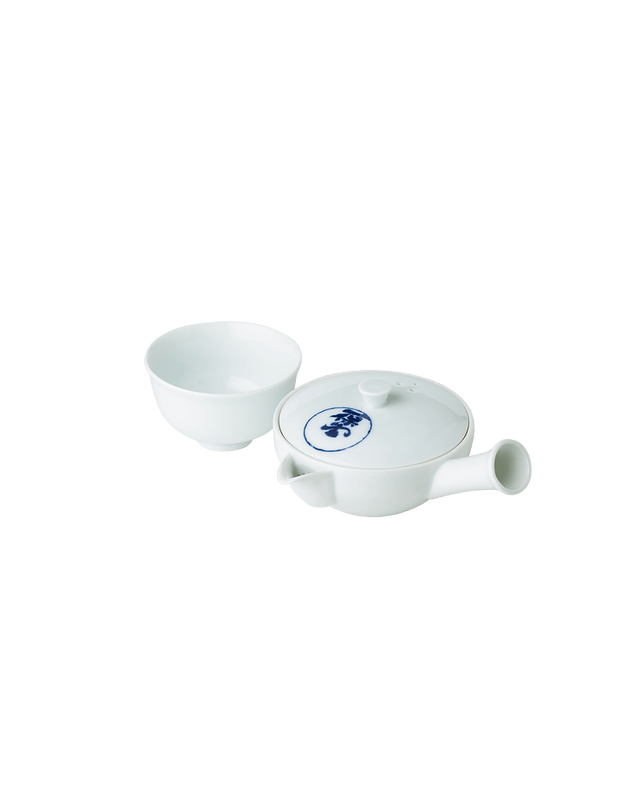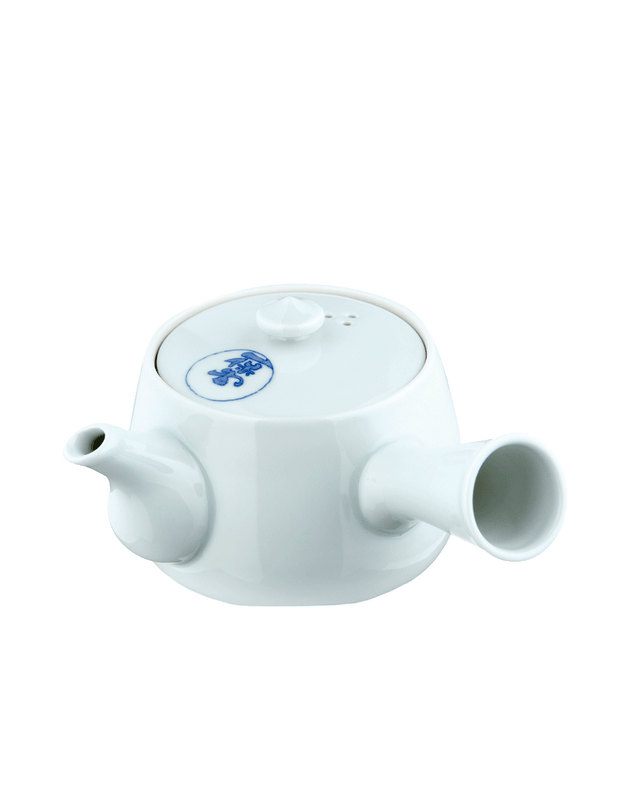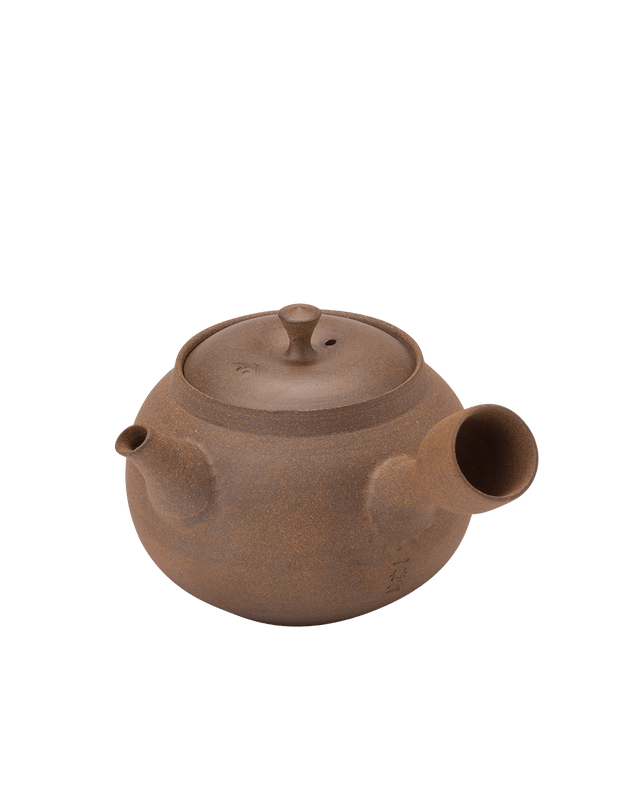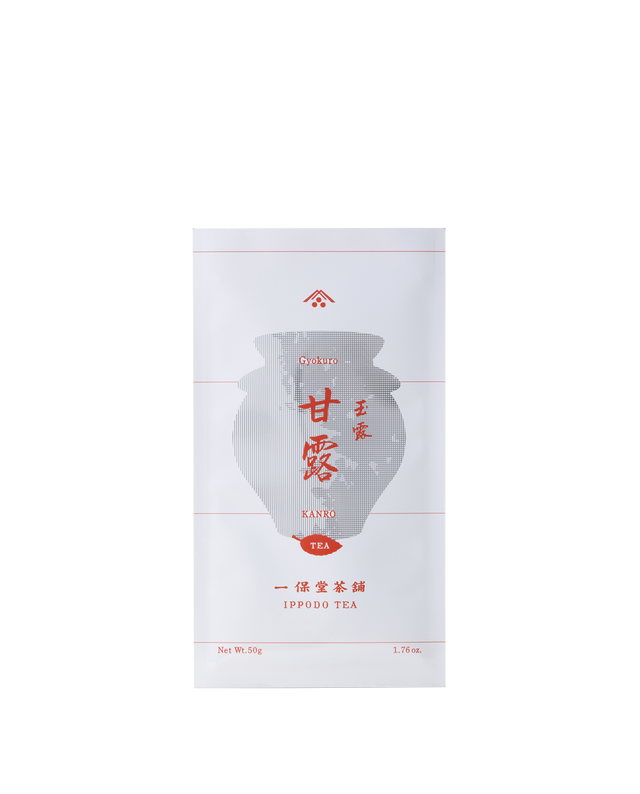The ideal kyusu for preparing a superb cup of Japanese tea!
This is the first kyusu we made for preparing a superb cup of Ippodo tea. It was originally only used in-house, but we ended up selling it due to demand from customers, and it has remained virtually unchanged ever since.
How do Ippodo staff use it?
Although not ideal for preparing large batches of tea, this kyusu is perfect for preparing small amounts of tea that allow you to fully savour rich flavour. That is probably why it has been a long-time best-selling kyusu!

Allows you to savour the tea leaves’ delicate flavours
This small kyusu, which holds about 120 ml, is excellent for drawing out the tea leaves’ delicate flavours. When you use it to prepare tea from leaves possessing rich umami, it produces something akin to ‘tea soup.’

Its size and shape make it easy to handle
The kyusu’s flat, compact shape and handle on the side allow you to hold and handle the teapot with one hand, even if you have small hands.

Makes adding tea leaves and cleaning up easy!
The kyusu’s large opening at the top and flat shape make it easy to add a lot of tea leaves, and also make cleaning up afterwards easier.

You can clean it with dishwashing detergent or bleach
Use kitchen bleach to remove tea stains, and remember to rinse it off thoroughly afterwards. In regular use, simply rinse with water to clean. You can also use dishwashing detergent, if you prefer.
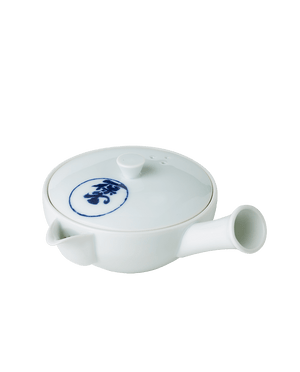
- Small White Porcelain Kyusu Teapot (Hasami-yaki)
- Box size : W15.5×D15.5× H8.5cm
- About Kyusu Teapot :
- Capacity: 120ml
- Weight: 270g
- Dimensions: Dia. 9.7× H6.0 cm (excl. handle and spout)
- Made in: Nagasaki Prefecture, Japan (Hasami-yaki)
- Dishwasher safe?: Yes
- Bleach OK?: Yes
-Dishwashing detergent OK?: Yes
-
April 15, 2023 at 6:59 pm
Everything at Ippodo is a dream. Teas, accessories, and - most of all - the customer care are done and managed at the highest. Level. I love in particular this lovely teapot. I also have a humble question: why aren't the edge of the lid and the thin internal diaphragm glazed as the rest of the surfaces? The porous feature of these two parts are subject to darken due to the theine forcing a cleaning operation with pollutants like peroxides and chlorine. Thanks for your attention
